Caveat lectorem: When readers submit comments, they are asked if they want to receive an email alert with a link to new postings on this blog. A number of people have said they do. Thank you. The link is created the moment a posting goes online. Readers who find their way here through that link can see an updated version by simply clicking on the headline above the posting.
It’s a strange week. At 2 p.m. today the thermometer at Mitchell cabin reached 101 degrees. Just after 3 p.m. I received a recorded telephone alert from the Sheriff’s Office saying there was a vegetation fire in West Marin but that so far no evacuations had been ordered. That was pretty vague, so I checked the fire department’s website which said: “Units are responding to the Drake Fire, a fire along Inverness Road near Limantour. Currently, the fire is approximately two acres in size with a slow rate of spread. One structure threatened.”
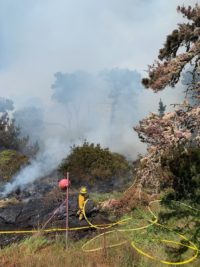
Sheriff’s photo of the Drake Fire.
No one seemed to know where “Inverness Road” is, but around 4 p.m. the fire department posted that the fire was in the National Seashore, was near Vision Road (not Inverness Road), was 50 percent contained, and had been held to less than three acres.
My wife Lynn, who’s the Point Reyes Disaster Council coordinator, urges everyone to sign up for alertmarin.org and nixle.com. The sheriff, via Alertmarin, has your home phone number, but you need to register your cell phones. You can hear about such things when you’re over the hill. Nixle will reach you on smartphones; she automatically received messages that way today, while I received the home robocall. And, she says, check the Marin County Fire twitter feed (you don’t need a twitter account). If you have no internet devices, tune in to KWMR on the radio for current information.
The Drake Fire, which was started by a tree limb falling on a powerline, follows a small fire Sunday on Mount Tamalpais near Panoramic Highway and Muir Woods Road. A PG&E transformer has been blamed for that fire.
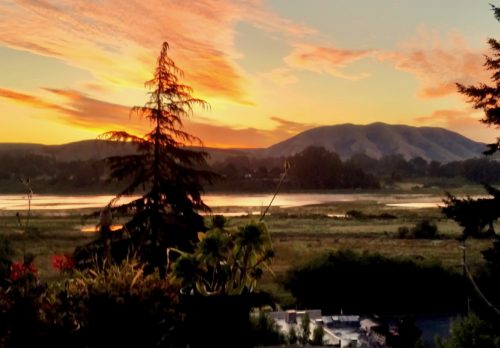
Meanwhile, the Sand Fire in Yolo County has burned 2,200 acres and as of Monday afternoon is only 30 percent contained. Smoke from that fire drifted over West Marin Sunday, and made Monday’s sunrise particularly dramatic. (Photo by Linda Sturdivant of Inverness Park)
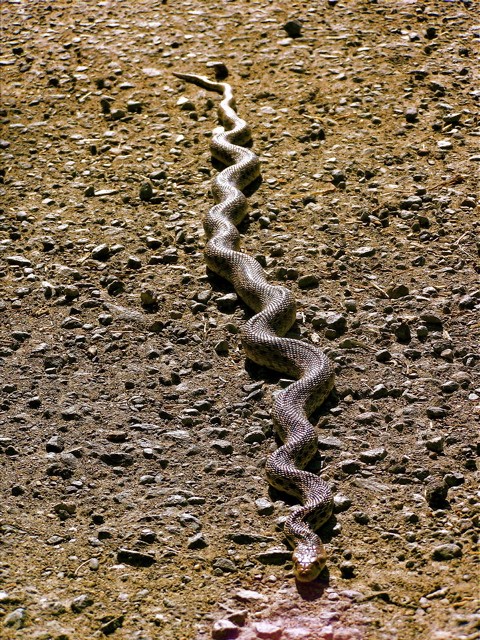
Snake handling. As I started up our road Saturday, I spotted a three-foot-long gopher snake stretched out across the pavement sunning itself. Lest another car run over it, I stopped, got out, and grabbed the snake around its neck just behind its head. Holding the tail out with my other hand, I carried it uphill to a grassy area and released it. The snake quickly slithered off. It was the second time in the last year or so I carried a snake off the road. This time I didn’t get at all nervous.

Different species cohabiting at Mitchell cabin. A flock of wild turkeys casually walks past a doe and young buck, which hardly notice.
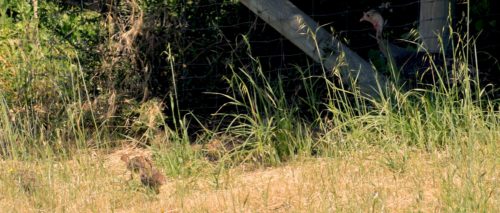
A wild turkey hen guides her chicks along the edge of the field.
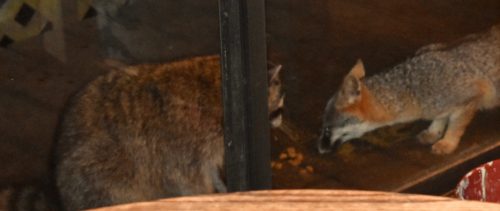
Dinner mates eating kibble. A raccoon and gray fox dined nose to nose on our deck last night, and neither seemed to worry the other.
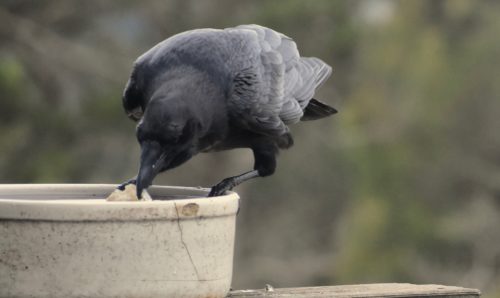
A raven moistens bread in our birdbath to make it easier to swallow. God only knows where he found the bread, but then he’s always coming up with biscuits, cookies, birds eggs, and animal parts. Last week Lynn and I watched this raven kill a gopher in the grass and then tear it apart.
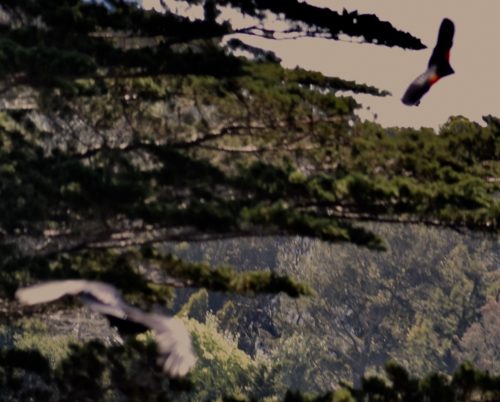
Protecting its nest, a red-winged blackbird (top right) repeatedly buzzes and pecks the raven (lower left) as it flies away.
“The population of the common raven is exploding across the American West, where it thrives on human refuse and roadkill,” The Los Angeles Times reported Sunday. “As the large, strutting predators piggyback on the spread of human civilization, they are expanding into territories where they have never been seen in such large numbers. This expansion has come at the expense of several threatened species, including the desert tortoise, whose soft-shelled hatchlings and juveniles have been devoured by the birds.” Scientists are now trying to reduce the number of desert ravens by using drones to spray oil on their nests.
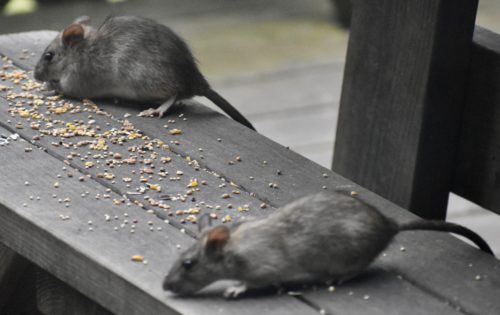
Two roof rats gobble up birdseed before the birds eat it all.
In addition to all that excitement, Lynn in the past week managed to photograph some of our more exotic wildlife:

An egret walking beside our driveway last Thursday.
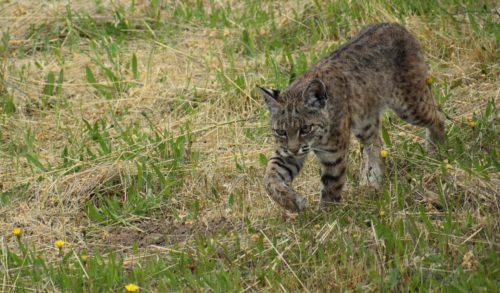
One of our local bobcats a week ago heading toward our garden, which it traversed without disturbing any flowers.
